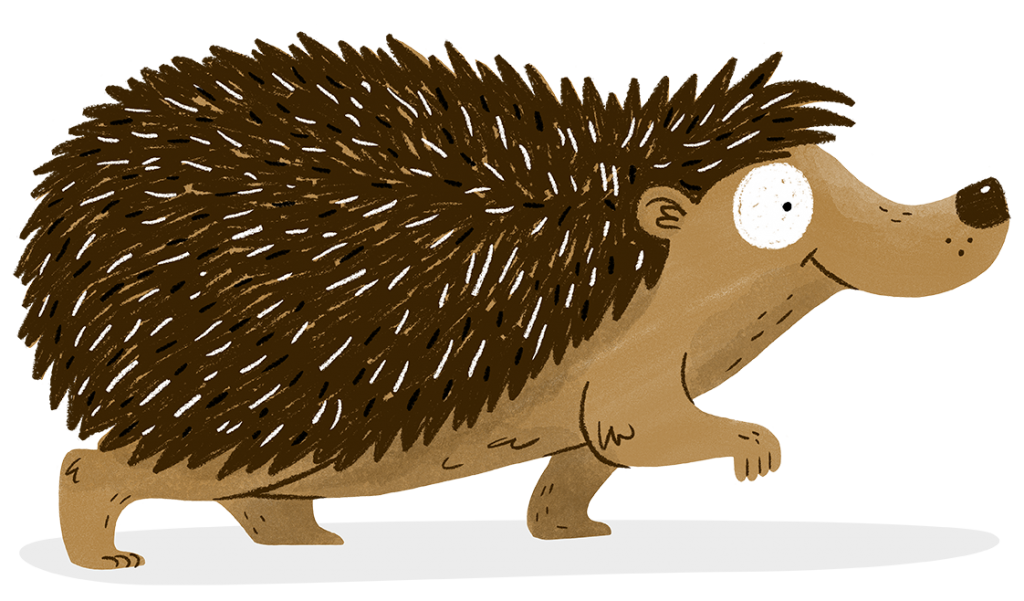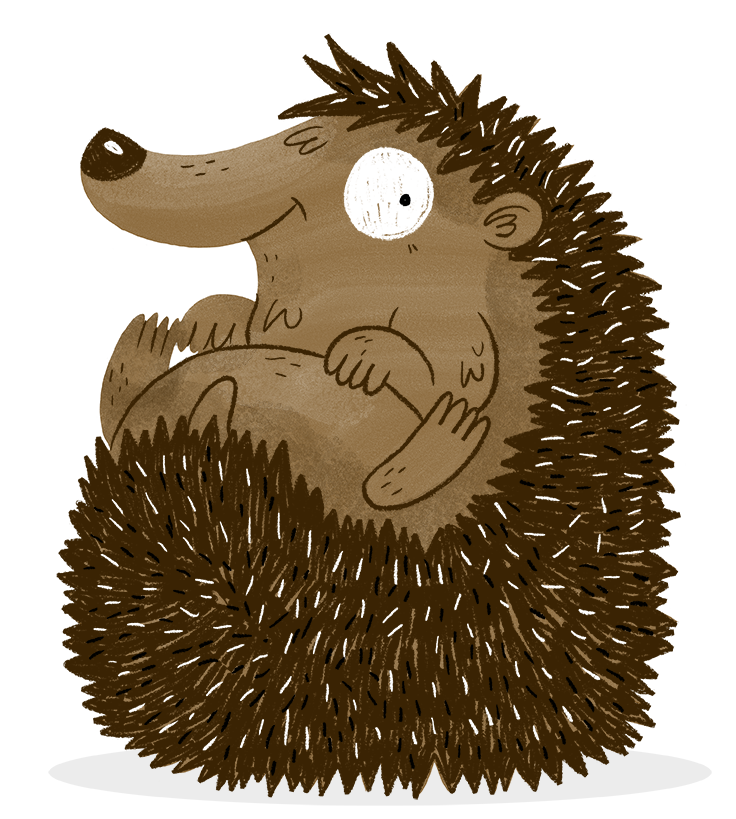What is a Hedgehog?
Hedgehogs are small, spikey mammals that first evolved 15 million years ago! They have a long history and are such an interesting species. Below you will find a few facts about this weird and wonderful animal!
There are 17 species of hedgehog, across 5 genera worldwide
The species we have in the UK is called the European Hedgehog
Scientific name – Erinaceus europaeus

General Facts – European Hedgehog
A fully grown, healthy, adult hedgehog will be around 20-25 cm long and weigh around 800-1100g, but some can be smaller and some can be bigger
On average an adult hedgehog has 5,000 – 7,000 speckled brown and cream spines. Each spine is made of keratin, the same material as your nails or hair, and a spine lasts about a year before it is shed and replaced by a new one
A hedgehog will raise it spines and curl into a ball if it feels threatened – this is it’s defence. They will also sleep in this position during the day and wake up at night to search for food
Hedgehogs mostly live 4-5 years, but have been known to reach their 10th birthday!
They can walk 1-2 miles every night. Their range can cover entire neighbourhoods!
They are solitary, meaning they generally live alone, but not particularly territorial, meaning they do not defend a certain area of land but instead roam freely
Habitat – they like to be in parks, gardens, farmland, and grassland near the edges of woodlands, mixed woodland, hedgerows and suburban habitats. Basically anywhere where they can find plenty of food and have protection from predators.
Hedgerows and wild overgrown areas are particularly important as they provide areas the hedgehogs can hide, sleep, nest, and in the hedge they can find plenty of bugs to eat!
Talking about food – your prickly garden visitor eats a wide range of things but particularly love snacking on a variety of invertebrates. This includes worms, beetles, slugs, caterpillars, earwigs and millipedes.
The fact hedgehogs sleep during the day and are active at night, means they are nocturnal
They have poor eyesight but have a great sense of smell and hearing

Baby Hedgehogs
Hedgehog young are called urchins or hoglets
A female gives birth to 2-6 hoglets (most commonly 4 or 5) in the summer. Although with warmer weather each year we are starting to see hoglets being born from as early as the end of April
The females can give birth to a second litter later in the year, generally around September. These hoglets often get called ‘Autumn Juveniles‘ and these late-born hoglets have a really tough time getting big enough to survive the winter
If ever you are lucky enough to see a female hog with babies, please be very quiet and disturb them as little as possible. A female is very likely to abandon or hurt her young if she gets scared
Hoglets are born without spines, and soft pure white spines appear around 2 hours after birth. At around 3 days old the brown spines start to emerge
At around 2 weeks old the hoglets eyes will open and they can see the world for the first time!
When they turn 3 weeks old their teeth start to emerge. At this point they might start exploring out of the nest with mum
At around 5-6 weeks old they leave mums care and venture off on their own!

Hibernation
When it gets cold, typically around November-April, hedgehogs normally hibernate
Hibernation is not just a deep sleep. During hibernation a hedgehogs metabolism slows down, their body temperature drops from 35C to around 10C, they go from having around 190 heartbeats per minute, to only around 20 per minute, and they only take about one breath every 2 minutes!
Why? A good question! Hibernating means they save energy and can ‘skip’ the cold winter months which often do not have enough food (insects) available to eat
During the hibernation months it is quite normal for a hedgehog to occasionally wake up, top-up on food and water, before making another nest to restart hibernation
While hibernating a hedgehog uses energy from its fat stores, so it is important they are a good weight (600g or more) before hibernating
Global warming means winters are often getting warmer, which means hedgehogs may not get the cold signals they need to trigger hibernating. We are seeing more hogs staying awake later in the year, and waking up earlier

Fun Facts
Most hogs are brown in colour. Rarely, their spines and fur can lack pigment (called leucism). These hogs look very blonde, almost white, in colour. If they lack ALL pigment, even rarer, they would be classified as albino.
Their face is pointed and furry. They have a little black nose that can pick up the smell of their supper, a predator, or another hog on the breeze. Their sense of smell is so good they can smell food 1 inch below the soil!
They have a little tail that is usually between 2cms long
Hedgehogs get their name from their peculiar foraging methods. As they search for food in hedgerows they will make noises, like a pig grunt, thus hedgehog!
If you have ever seen a hedgehog self-annoint you will know it is a most peculiar process! Normally it is when they taste something new – for example a weaning baby tasting water for the first time, or if a hog licks another hog! They make a frothy saliva, twist their body, and try to cover their spines in this saliva by licking all over. Why do they do this?? Who knows! Some people think it’s designed to help the hog mask their own scent from predators
In the Irish language the hedgehog is called Grainneog, which translates to ‘the horrible one’ or ‘little ugly thing’. We don’t think so!
Want to know more?
Click here to go to a website called ‘Hedgehog Street’ where you can become a Hedgehog Champion, and see if there are hedgehogs in your area on the Big Hedgehog Map
Click here to read about hedgehogs in literature and folklore
Click here to check out the Ark Wildlife Hedgehog Hibernation Calendar & Timeline
Click here to go to craft corner and learn how to make some adorable hedgehogs using items you might already have at home!
Illustrations by Sandra Ortuño